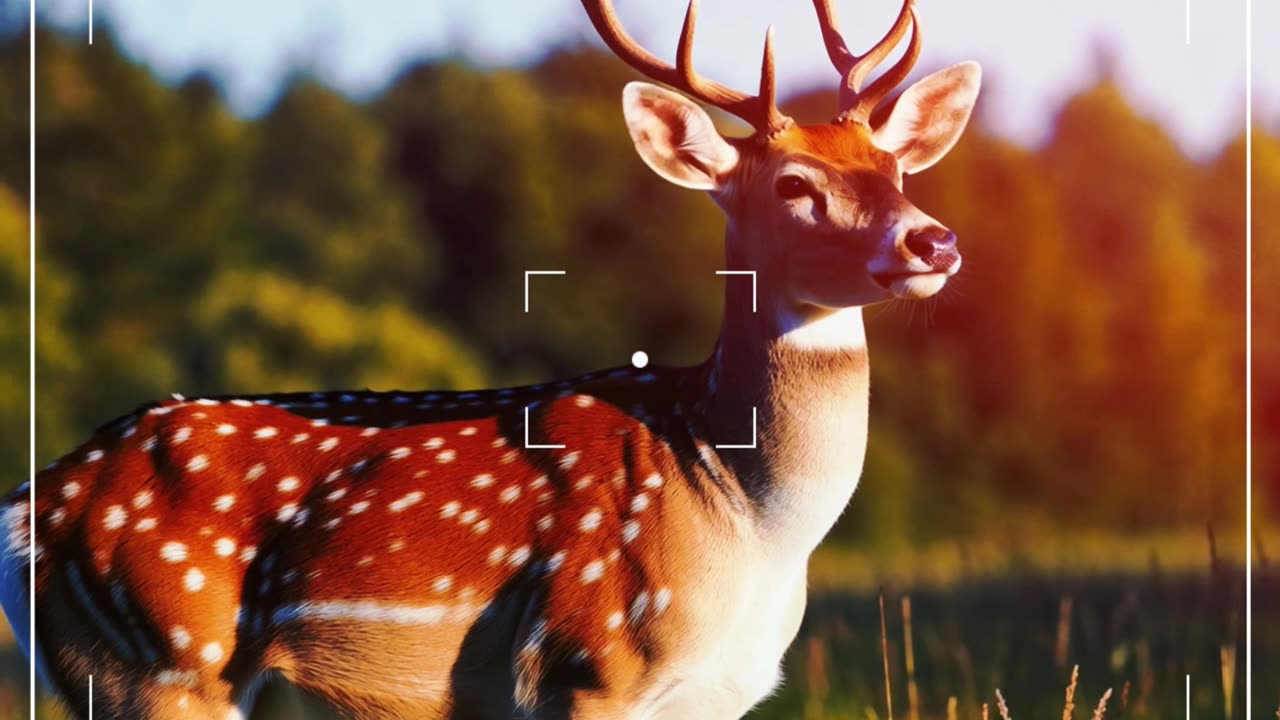Premium Only Content

The sika deer belongs to the genus Cervus in the family Cervidae. They are 140-170 cm long, 85-100 cm tall at the shoulder, with a tail length of 12-13 cm and a weight of 100-150 kg. Males have antlers, while females are antlerless. Males' antlers are typically three- or four-pronged. They have large, erect ears, slender limbs, a well-proportioned body, and a short tail. Their fur is red with irregular rows of white spots along their backs. Their lower jaw is white, their nose and cheeks are sandy yellow, and the back of their tail is dark brown, with the underside of the tail and groin white. The underside of their tail is light brown. Their coat is thin and hairless in summer, becoming denser and walnut-brown in winter, with less noticeable white spots. Sika deer are widely distributed in eastern China, extending to eastern Siberia, Japan, the Ryukyu Islands, the Korean Peninsula, and once in northern Vietnam. They have also been introduced to Europe, the United States, and New Zealand. Its main habitats include mixed forests, mountain grasslands and forest edges. Its diet is extremely wide, and it eats as many as 145 species of plants. In winter and early spring, it mainly feeds on various dead grasses and young branches and shoots of forest shrubs. In summer, it feeds on grass, leaves and young branches and shoots of shrubs. In autumn, it mainly feeds on herbaceous plants and starchy fruits in shrubs. Sika deer like to live in groups, and in winter the group often reaches more than 20-30. Its mating season is from September to October, the gestation period is 7-8 months, and it gives birth in April-May of the following year. It usually gives birth to one baby per litter, and occasionally two babies. The lifespan of an adult can reach 25 years.
-
 50:14
50:14
Coin Stories with Natalie Brunell
19 hours agoUptober, Q4, and Bitcoin’s Next Leg with Mark Moss
991 -
 31:05
31:05
Liberty Hangout
1 day agoAnti-Fascists Can't Define Fascism
100K148 -
 2:35:27
2:35:27
FreshandFit
6 hours agoThe Biggest Debt Problem in America
89.1K13 -
 2:10:56
2:10:56
Inverted World Live
9 hours agoRobot Holocaust | Ep. 123
77.2K8 -
 3:22:33
3:22:33
Laura Loomer
9 hours agoEP149: Trump Frees the Hostages: Will HAMAS Respect the Ceasefire?
61.3K44 -
 1:02:02
1:02:02
The Nick DiPaolo Show Channel
9 hours agoTrump’s Success Rattling Lefties | The Nick Di Paolo Show #1804
34.6K27 -
 2:49:33
2:49:33
TimcastIRL
9 hours agoDemocrat Call On Liberals To 'FORCEFULLY RISE' Against Trump, DHS ATTACKED In Chicago | Timcast IRL
241K114 -
 2:50:07
2:50:07
Badlands Media
15 hours agoDEFCON ZERQ Ep. 013: Global Shifts, Spiritual Warfare, and the Return to Source
64.7K68 -
 6:21:11
6:21:11
SpartakusLIVE
10 hours agoLIVE from SUPER SECRET, VIP Location || BEACH FRONT into Verdansk
78.4K7 -
 1:20:01
1:20:01
Flyover Conservatives
1 day ago"The Testosterone Levels of a Baby Bird" - America’s Health Crisis w/ Dr. Troy Spurrill | FOC Show
51.3K1